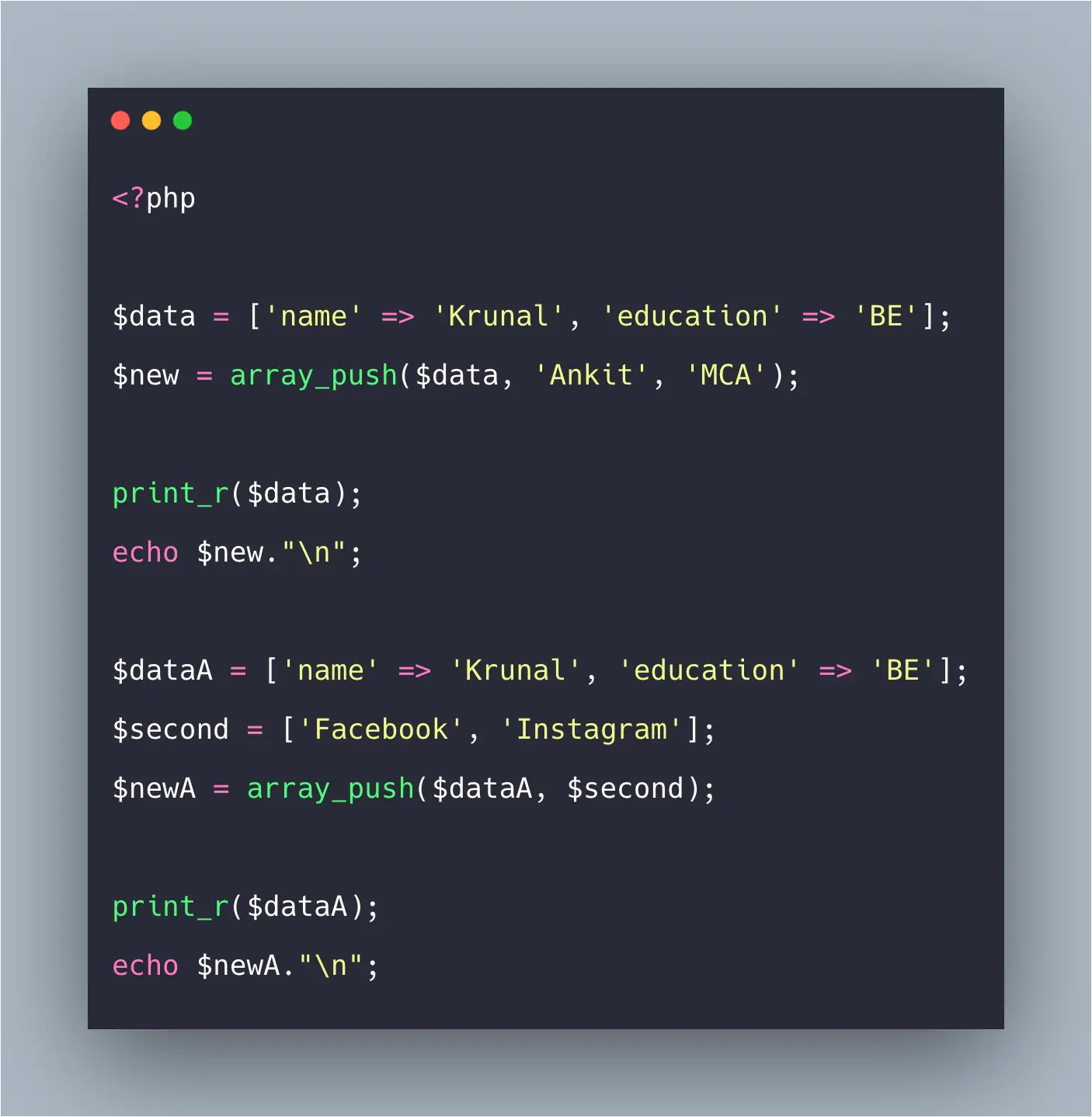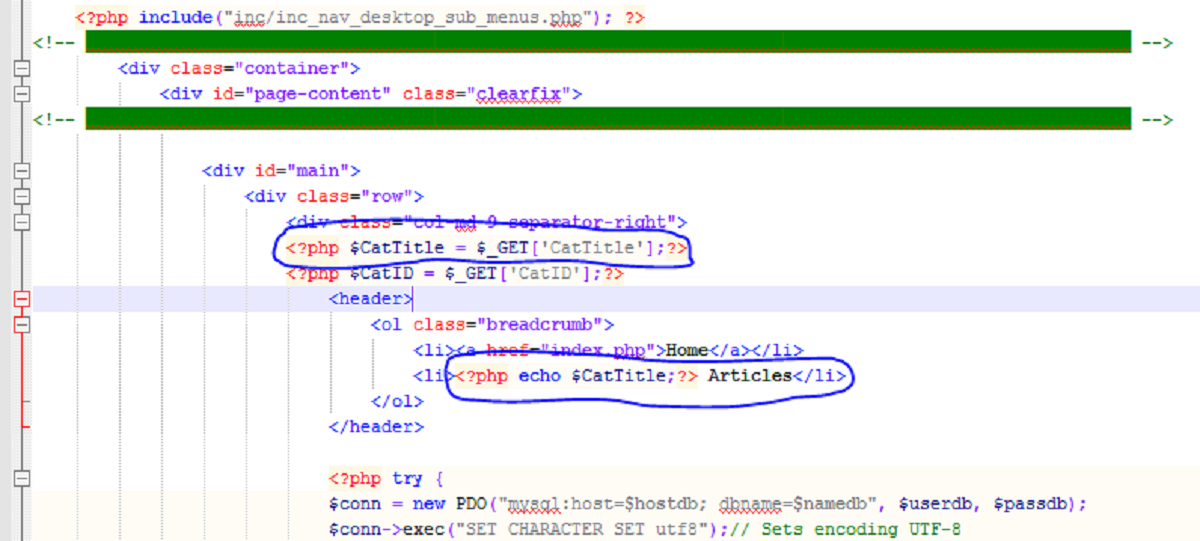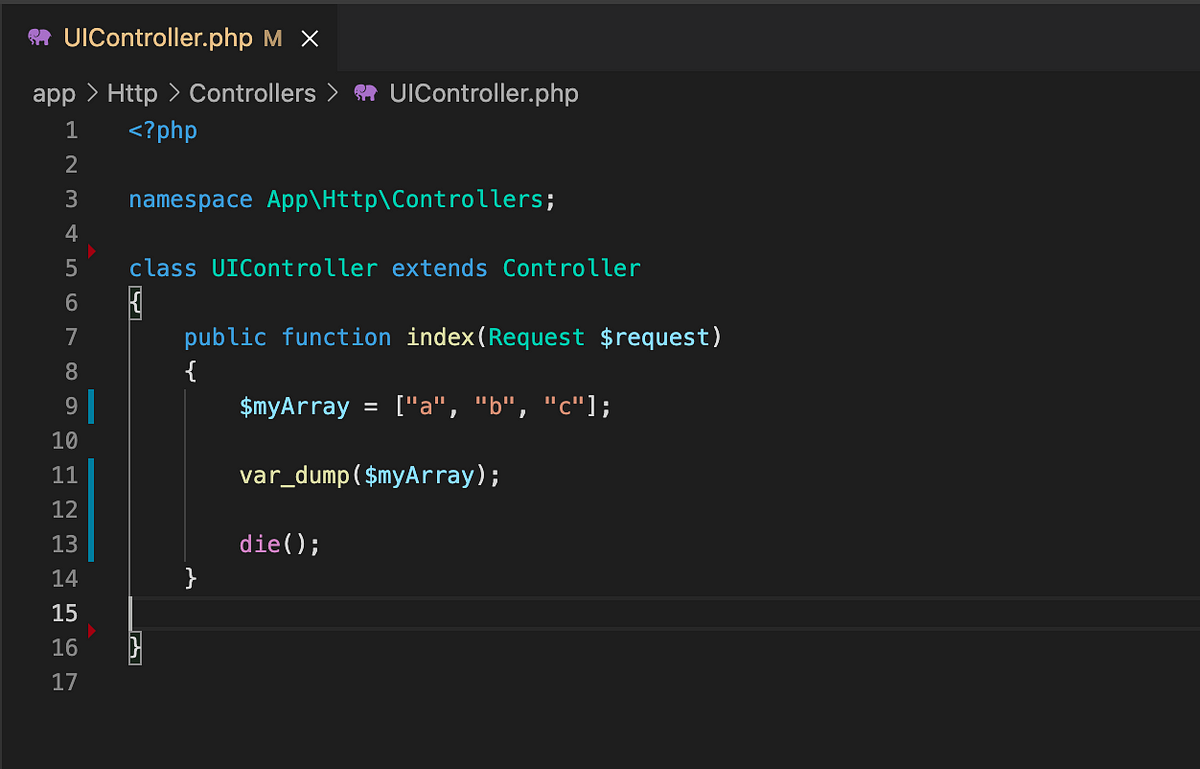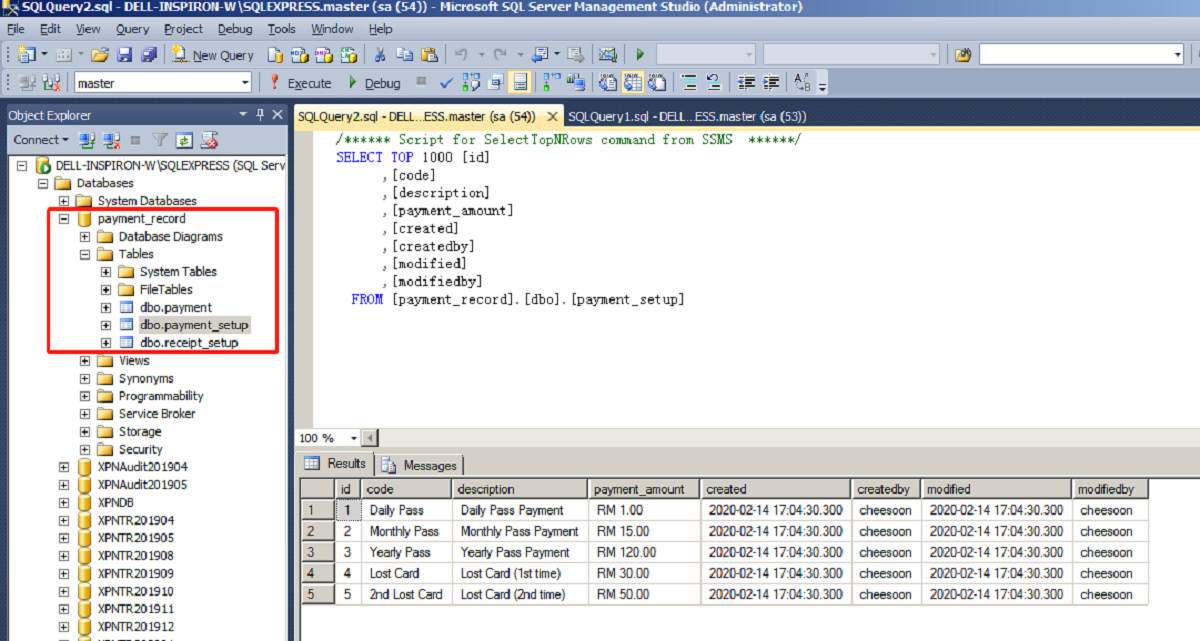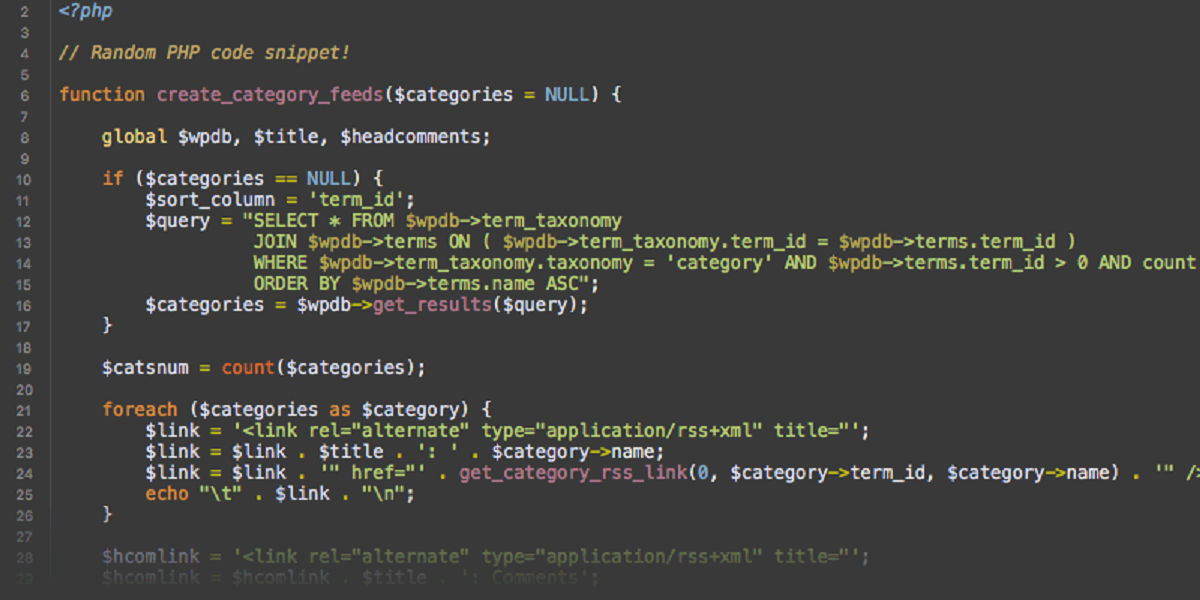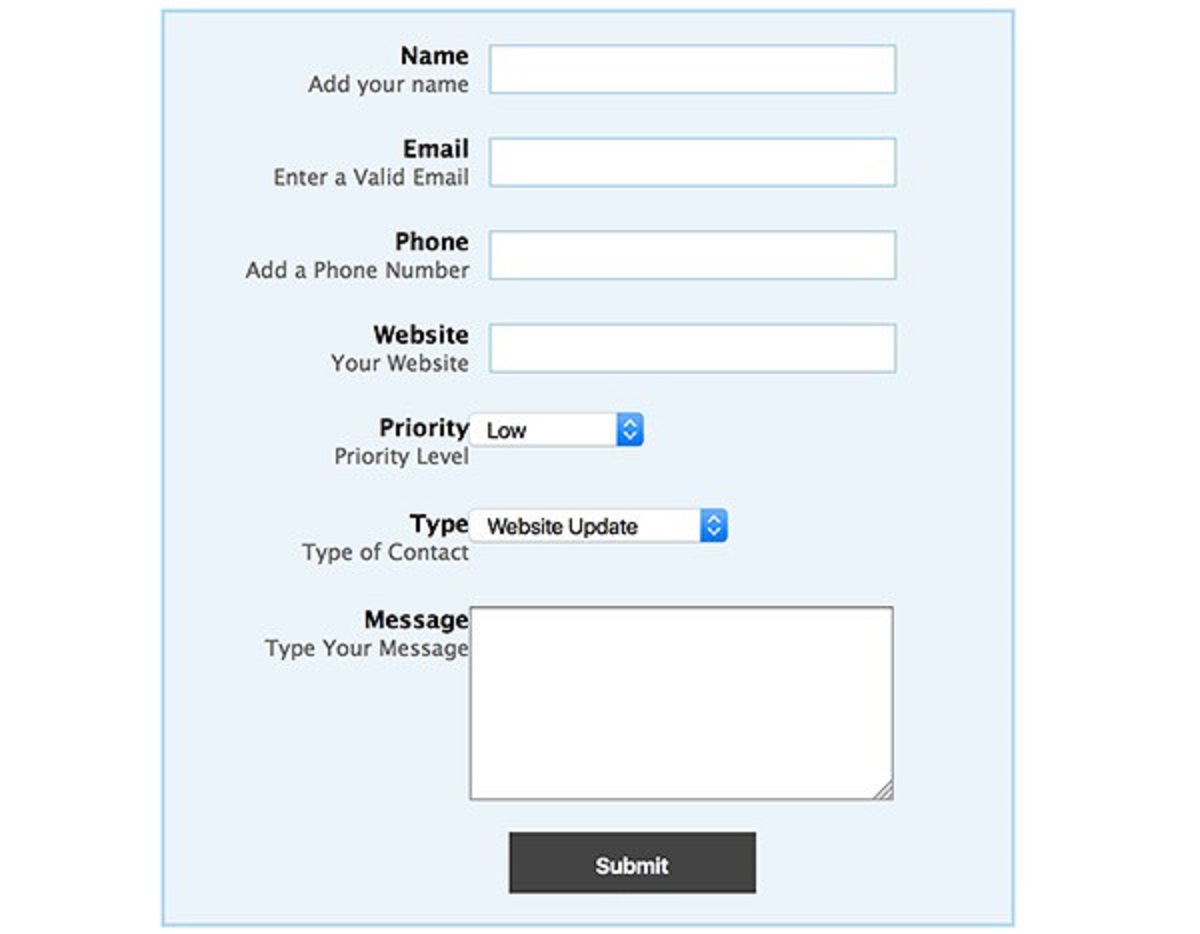Introduction
Arrays are an essential data structure in PHP that allow you to store and manipulate multiple values in a single variable. They are widely used in PHP programming to organize and manage data efficiently. One common task when working with arrays is adding elements to them. Whether you want to append elements at the end of an array, insert them at a specific position, or add multiple elements at once, PHP provides various functions and techniques to achieve this.
In this article, we will explore different methods to add elements to an array in PHP. We will cover essential techniques such as adding elements at the beginning or end of an array, as well as inserting elements at a specific index. Additionally, we will learn how to add multiple elements to an array in a single operation.
By understanding these techniques, you will have a solid foundation in adding elements to arrays in PHP and be able to effectively manage and manipulate your data. So, let’s dive in and explore the different ways to add elements to arrays in PHP!
Creating an Array in PHP
Before we dive into adding elements to an array, let’s first understand how to create an array in PHP. In PHP, you can create an array using the array() function or by using the shorthand syntax []. Here’s an example:
php
// Using the array() function
$fruits = array(‘apple’, ‘banana’, ‘orange’);
// Using the shorthand syntax
$colors = [‘red’, ‘blue’, ‘green’];
In the above examples, we created two arrays: $fruits and $colors. Both arrays contain a list of elements enclosed within square brackets. Each element is separated by a comma.
Arrays in PHP are dynamic, meaning you can add or remove elements as needed. The size of the array automatically adjusts based on the number of elements it contains.
Now that we have a basic understanding of creating an array in PHP, let’s move on to adding elements to an existing array.
Adding Elements to an Existing Array
Once you have an existing array, you may need to add new elements to it. PHP provides several methods to accomplish this. Let’s explore some of the most commonly used techniques:
2.1. Adding Elements at the End of an Array
To add elements at the end of an array, you can use the [] operator or the array_push() function. Here’s an example using the [] operator:
php
$fruits = [‘apple’, ‘banana’, ‘orange’];
$fruits[] = ‘grape’;
In the above example, we appended the element 'grape' to the $fruits array using the [] operator. The [] operator automatically adds the element to the end of the array.
Alternatively, you can use the array_push() function:
php
$fruits = [‘apple’, ‘banana’, ‘orange’];
array_push($fruits, ‘grape’);
Here, the array_push() function appends the element 'grape' to the $fruits array. It works in a similar way to the [] operator.
2.2. Adding Elements at the Beginning of an Array
If you want to insert elements at the beginning of an array, you can use the array_unshift() function. Here’s an example:
php
$fruits = [‘apple’, ‘banana’, ‘orange’];
array_unshift($fruits, ‘grape’);
In the above example, the array_unshift() function inserts the element 'grape' at the beginning of the $fruits array. The existing elements are shifted to the right.
2.3. Adding Elements at a Specific Index in the Array
If you want to add elements at a specific position within an array, you can use the array_splice() function. The array_splice() function allows you to remove existing elements and/or add new elements at the specified index. Here’s an example:
php
$fruits = [‘apple’, ‘banana’, ‘orange’];
array_splice($fruits, 1, 0, ‘grape’);
In the above example, the array_splice() function adds the element 'grape' at index 1 of the $fruits array. The third argument, 0, specifies the number of elements to remove (in this case, none).
Using the array_splice() function, you can add elements at any desired index and also remove elements from the array, if needed.
2.4. Adding Multiple Elements to an Array
If you need to add multiple elements to an array at once, you can combine the [] operator or array_push() function with an array of elements. Here’s an example:
php
$fruits = [‘apple’, ‘banana’, ‘orange’];
$newFruits = [‘grape’, ‘kiwi’];
$fruits = array_merge($fruits, $newFruits);
In the above example, we created a new array, $newFruits, containing additional elements. Using the array_merge() function, we merged the existing $fruits array with the $newFruits array, resulting in a combined array with all the elements.
By utilizing these techniques, you can easily add elements to an existing array in PHP, whether at the end, beginning, or a specific index. Additionally, you can add multiple elements at once to efficiently manage and manipulate your data.
Adding Elements at the End of an Array
Adding elements at the end of an array is a common operation when working with arrays in PHP. It allows you to append new elements to the existing array without modifying the order of the existing elements. PHP provides multiple ways to achieve this. Let’s explore some of the most commonly used techniques:
3.1. Using the [] Operator
The simplest and most straightforward way to add elements at the end of an array is by using the [] operator. Here’s an example:
php
$fruits = [‘apple’, ‘banana’, ‘orange’];
$fruits[] = ‘grape’;
In the above example, we have an array named $fruits containing three elements. By using the [] operator, we simply assign the new element ‘grape’ to $fruits[], which automatically adds it at the end of the array. This is an efficient and commonly used method to append elements to an array.
3.2. Using the array_push() Function
Another way to add elements at the end of an array is by using the array_push() function. This function accepts an array as the first argument and the element(s) to be added as subsequent arguments. Here’s an example:
php
$fruits = [‘apple’, ‘banana’, ‘orange’];
array_push($fruits, ‘grape’, ‘kiwi’);
In the above example, we have an array named $fruits. By using the array_push() function, we can add multiple elements (‘grape’ and ‘kiwi’ in this case) to the end of the $fruits array.
It’s important to note that using array_push() can be slightly slower than the [] operator, especially when adding a single element. Therefore, if you only need to add a single element, using the [] operator is usually the preferred choice for its simplicity and efficiency.
3.3. Assigning Key-Value Pairs
If you’re working with associative arrays and want to add new key-value pairs at the end, you can utilize the [] operator or array_push() function as well. Here’s an example:
php
$student = [
‘name’ => ‘John’,
‘age’ => 21
];
$student[‘grade’] = ‘A’;
In the above example, we have an associative array named $student. By assigning a new key-value pair using the [] operator, we can add a new element (‘grade’ => ‘A’) at the end of the array.
Similarly, you can use the array_push() function with key-value pairs:
php
$student = [
‘name’ => ‘John’,
‘age’ => 21
];
array_push($student, ‘grade’, ‘A’);
Both methods work perfectly fine to add key-value pairs at the end of an associative array.
Adding elements at the end of an array is a straightforward process in PHP. By using the [] operator or the array_push() function, you can efficiently append elements to an array, whether it’s a simple indexed array or an associative array. These techniques give you flexibility in managing and expanding your arrays to suit your needs.
Adding Elements at the Beginning of an Array
There are situations in PHP where you may need to add elements at the beginning of an existing array. This operation is commonly performed to prepend new elements to an array without changing the order of the existing elements. PHP provides several methods to achieve this. Let’s explore some of the most commonly used techniques:
4.1. Using array_unshift()
The array_unshift() function allows you to add elements at the beginning of an array. It takes the array as the first argument and the element(s) to be added as subsequent arguments. Here’s an example:
php
$fruits = [‘apple’, ‘banana’, ‘orange’];
array_unshift($fruits, ‘grape’, ‘kiwi’);
In the above example, we have an array named $fruits. By using the array_unshift() function, we can add multiple elements (‘grape’ and ‘kiwi’ in this case) at the beginning of the $fruits array. This function also adjusts the keys of the existing elements accordingly.
It’s important to note that using array_unshift() modifies the original array rather than returning a new array. Therefore, the existing array gets updated with the new elements added at the beginning.
4.2. Using the + Operator
Another way to add elements at the beginning of an array is by using the + operator. This operator performs union operation on two arrays, resulting in a new array that combines the elements from both arrays. Here’s an example:
php
$fruits = [‘apple’, ‘banana’, ‘orange’];
$newFruits = [‘grape’, ‘kiwi’];
$combinedArray = $newFruits + $fruits;
In the above example, we have two arrays: $fruits and $newFruits. By using the + operator, we merge the $newFruits array with the $fruits array, resulting in a new array named $combinedArray. The elements from $newFruits are prepended to the elements of $fruits.
It’s worth noting that if there are keys that overlap between the two arrays, the value from the left array (in this case, $newFruits) will take precedence. The + operator creates a new array and leaves the original arrays unchanged.
4.3. Combining array_merge() and array_reverse()
If you want to add elements at the beginning of an array while preserving the order, you can combine the array_merge() function and the array_reverse() function. Here’s an example:
php
$fruits = [‘apple’, ‘banana’, ‘orange’];
$newFruits = [‘grape’, ‘kiwi’];
$fruits = array_merge(array_reverse($newFruits), $fruits);
In the above example, we first use the array_reverse() function to reverse the elements of $newFruits. Then, using the array_merge() function, we combine the reversed $newFruits array with the $fruits array, resulting in a new array where the elements of $newFruits are added at the beginning of $fruits while maintaining their original order.
Adding elements at the beginning of an array is a useful operation in PHP, allowing you to prepend new elements without altering the order of existing elements. By utilizing functions such as array_unshift(), the + operator, or a combination of array_merge() and array_reverse(), you have various options to flexibly add elements at the beginning of an array to meet your specific needs.
Adding Elements at a Specific Index in the Array
In PHP, you may encounter situations where you need to add elements at a specific position within an array. This operation allows you to insert new elements while maintaining the order of other elements. PHP provides a practical method to add elements at a specific index using the array_splice() function. Let’s explore how to accomplish this:
5.1. Using array_splice()
The array_splice() function in PHP allows you to add elements at a specific index in an array. It takes the array as the first argument, the start index as the second argument, the length (number of elements to remove) as the third argument (which we set to 0 to indicate no elements to remove), and the new element(s) as subsequent arguments. Here’s an example:
php
$fruits = [‘apple’, ‘banana’, ‘orange’];
array_splice($fruits, 1, 0, ‘grape’);
In the above example, we have an array named $fruits. The array_splice() function is used to insert the element ‘grape’ at index 1 (the second position) of the $fruits array. Since we set the length to 0, no existing elements are removed. As a result, the ‘grape’ element is inserted at the specified index, and the remaining elements are shifted to the right.
You can also add multiple elements at a specific index using the array_splice() function. Here’s an example:
php
$fruits = [‘apple’, ‘banana’, ‘orange’];
array_splice($fruits, 1, 0, ‘grape’, ‘kiwi’);
In the above example, we inserted both ‘grape’ and ‘kiwi’ at index 1 of the $fruits array. The new elements are added at the specified index, and the existing elements are shifted accordingly.
Using array_splice(), you have the flexibility to insert elements at any desired index within an array. Additionally, if needed, you can remove existing elements by specifying a non-zero length. This function provides a powerful way to modify and manipulate arrays in PHP.
Adding Multiple Elements to an Array
There are scenarios in PHP where you may need to add multiple elements to an array at once. This operation allows you to efficiently expand an array with a single operation instead of adding each element individually. PHP provides several methods to accomplish this. Let’s explore some of the commonly used techniques for adding multiple elements to an array:
6.1. Using the array_merge() function
The array_merge() function in PHP allows you to merge two or more arrays together, combining their elements into a single array. You can use this function to add multiple elements to an existing array. Here’s an example:
php
$fruits = [‘apple’, ‘banana’, ‘orange’];
$newFruits = [‘grape’, ‘kiwi’];
$fruits = array_merge($fruits, $newFruits);
In the above example, we have an array named $fruits and a separate array $newFruits. By using the array_merge() function, we combine the elements from both arrays and assign the merged array back to $fruits. This effectively adds the elements ‘grape’ and ‘kiwi’ to the end of the original $fruits array.
6.2. Using the [] Operator
If you have a set of elements that you’d like to add to an array, you can simply use the [] operator to append them all at once. Here’s an example:
php
$fruits = [‘apple’, ‘banana’, ‘orange’];
$fruits[] = ‘grape’;
$fruits[] = ‘kiwi’;
In the above example, we add the elements ‘grape’ and ‘kiwi’ to the $fruits array using the [] operator. Each element is added individually, but it allows for a concise way to add multiple elements without the need for a separate array variable.
6.3. Creating an Array with Multiple Elements
If you don’t have an existing array and want to create a new array directly with multiple elements, you can use the [] operator or the array() function with a list of elements. Here’s an example:
php
$fruits = [‘apple’, ‘banana’, ‘orange’, ‘grape’, ‘kiwi’];
In the above example, we create a new array named $fruits directly and initialize it with all the elements we want. The [] operator allows us to quickly define an array with multiple elements in a single line of code.
Adding multiple elements to an array can be accomplished efficiently using the array_merge() function, the [] operator, or initializing a new array directly with the desired elements. These techniques provide flexibility and convenience when expanding arrays with multiple elements at once.
Conclusion
In PHP, adding elements to an array is a fundamental operation that allows you to expand, modify, and manipulate your data effectively. Throughout this article, we explored various methods for adding elements to an array, including adding elements at the end, beginning, and specific indexes, as well as adding multiple elements in one operation.
We learned that appending elements at the end of an array can be achieved using the [] operator or the array_push() function. When adding elements at the beginning, the array_unshift() function is a reliable option. To insert elements at a specific index, we can utilize the array_splice() function. Finally, we explored adding multiple elements to an array using array_merge() or directly initializing an array with multiple elements.
By understanding these techniques, you have gained the knowledge and tools necessary to effectively add elements to arrays in PHP. These methods provide flexibility and efficiency in managing your data structures, allowing you to modify arrays as needed without losing the integrity of the existing elements.
Remember to consider the specific requirements of your task or problem when choosing the appropriate method for adding elements to an array. Each technique offers different advantages and can be applied based on the context of your application or program.
With your newfound understanding of adding elements to arrays in PHP, you are now equipped to handle a wide range of scenarios and efficiently manage your data with confidence.







